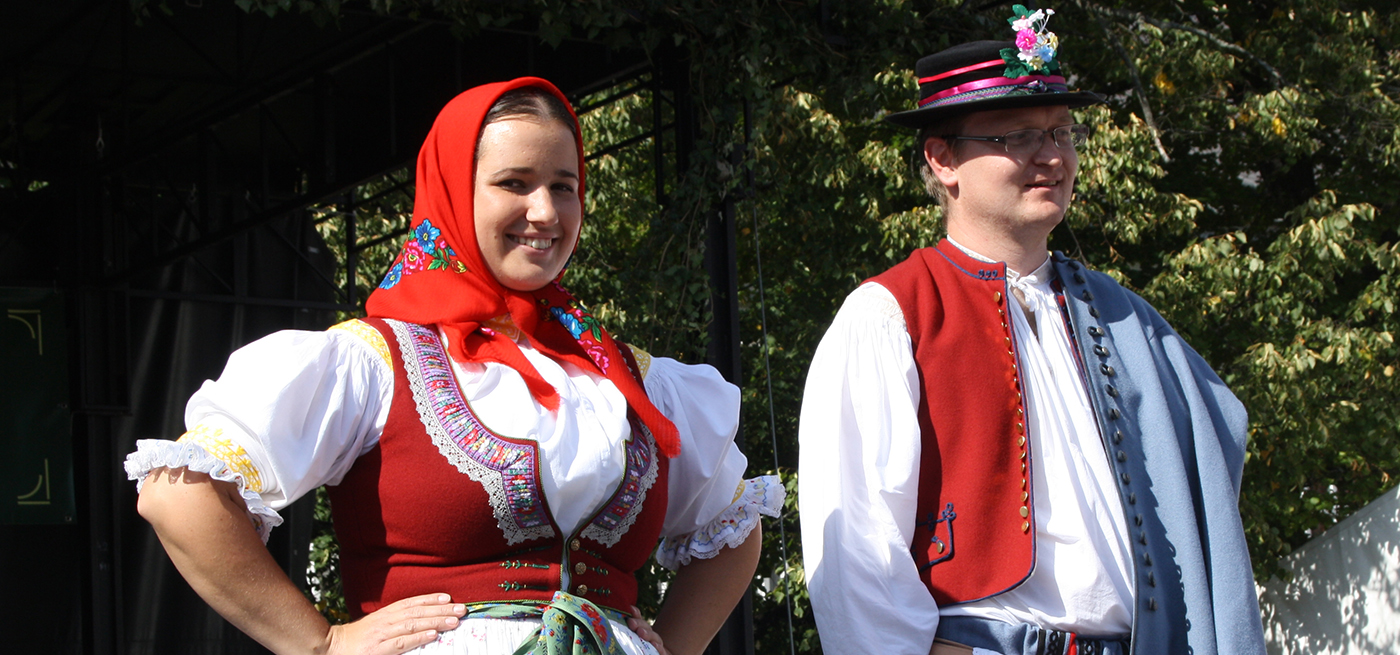Shanghai International Studies University (SISU) – July 10, 2015
A Few Faithful Preserve Czech Folk Fashion
By Doris Zhang Yu
PRAGUE — With a long elegant skirt, white large-tapered-sleeves blouse, well-decorated vest and a small apron, the Kroje shows its beauty to everyone who fixes his eyes on it.
The Kroje is generally an unpopular style since the late 19thcentury. Because the Kroje is one of the Czech Republic’s folk costumes, it is easy to predict the fate of other folk costumes in other Czech regions.
“I began making the Kroje by hand in 2006 and, to date, I have not found anyone who makes the costumes by hand,” said Sharon Middlebrook Mena. Sharon, an American woman, was married to Ray Middlebrook, who is three-fourths Czech. “This is just a hobby for me as the costumes can take more than 2,600 hours (two years) to complete,” Sharon adds. “To date, I have created 3 authentic-looking costumes.”
Making Kroje by hand takes a lot of effort and time, but still, it is a good way for Czech people to honor their heritage and ancestry. Sharon’s daughter, Sarah Middlebrook Armor was named the 2006 Miss Czech-Slovak’s USA Queen in Wilber, Nebraska. Upon seeing her daughter’s beautiful antique Czech Kroje, Sharon became interested in the traditional dress and began working on it. “My husband passed away in 2010 and his parents and grandparents had already passed. So, even though I am not Czech, I enjoy participating in Czech heritage awareness with my children. This is a way for them to connect with their ancestors and honor their father’s memory.”
“The costumes are also very large and are not very comfortable to wear, though they are breathtaking to behold when worn properly,” said Sharon. Because the Kroje is large in size and is uncomfortable when worn, it can hardly be seen on Prague’s streets. When Sarka Truxova, a young Czech woman, commented on folk costume, she said, “I personal don’t have one, but my grandmother who is originally from Moravia had one and gave it to my mum several years ago.”
Though culture in Prague is not very visible, there are still some places that care much about the heritage in folk costumes. Sarka’s mum, who lives 15 kilometers from Prague, wears the folk costume regularly as a member of the Baracnicke group. “There is still strong tradition in Moravia and people takes wearing folk costumes as local heritage and even here near Prague you still find clubs where people can gather and keep this tradition live as my mum and her fellows does,” Sarka noted.
“When you’re the worst, Czech nation, remember Townsmen. Remember what began in the 19th century and this helps ensure that the tradition has and will survive for generations to come.” Through the “Townswomen Odolena Voda” website, we can find out how some Czech people try to save their tradition, including their folk costume. Members of this association dress up in folk costumes during ceremonial occasions. They also organize trips and events to spend time together and let others know more about Czech’s tradition.
There is also an organization, which originated in April 2002, named “Czech Heritage Club”. With the phrase “Preserve the Past for the Future” located on the top of their website, their purpose is easily seen. It is a pity that I cannot get in touch with them, but from the articles and links showed on the page, we can still glance at their achievements.
Nowadays, many Czech choose to wear smart-casual or other modern stylish clothes instead of Kroje or other folk costumes. As a symbol of the nation, folk costumes are still visible in some small villages of Bohemia and Moravia. When asked whether or not the day will come when people no long wear these folk costumes, Sharon responds, “I cannot say with certainty but I, for one, look forward to my daughter passing down the Kroje I made to her daughters and granddaughters.”
 Education
Education